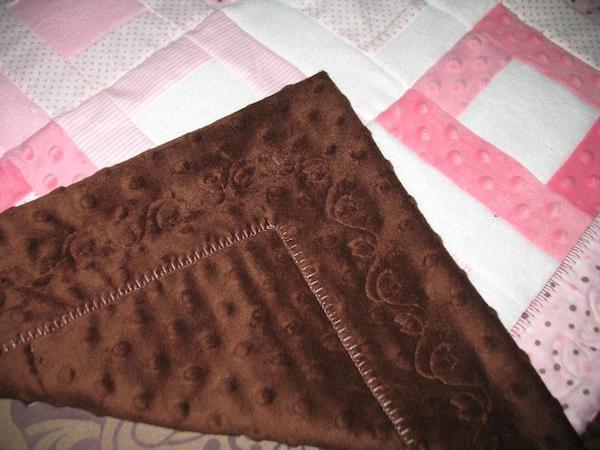Looking for the best fabric for your quilt backing? From quilting cottons (standard size and extra-large) to alternative fabrics, here are some great quilting fabric options to help you finish your quilt, from front to back!
 Baby Boy Quilt via Bluprint member Sophie Belle
Baby Boy Quilt via Bluprint member Sophie Belle
Let’s explore how to choose fabric for quilt backing
Quilting cotton
Perhaps the most popular quilt backing is plain or patterned quilting cotton. When you choose fabric for a quilt backing, you will want to measure your quilt top and add several inches to the length and width, which will be the measurement for your quilt backing.
For crib-size quilts like the Baby Boy Quilt pictured above, you’ll often be able to using a single cut of fabric to cover the entire quilt back. This makes patterned fabrics are a great option!
For larger quilts, you may need to piece together two cuts of backing fabric to make a quilt backing that’s large enough for your quilt. This is because many quilting cottons are only 42″ to 44″ wide. If you prefer to skip this step, you can look for extra-wide quilting fabric that’s up to 108″ wide, which makes a great quilt backing for bed-size quilts.
Note: Quilters Paradise offers a helpful quilt backing and batting calculator to determine the measurements you’ll need for your quilt.

Giant Vintage Star Quilt via Bluprint member Jeni Baker
Bed sheets
Because they already come in large, bed-size pieces, sheets make excellent quilt backs! Vintage sheets, like this one seen in the Giant Vintage Star Quilt pictured above, can often be picked up at thrift shops and yard sales at a budget price. In addition to being larger than a normal cut of quilting fabric, solid and patterned bed sheets are typically soft, making for extra-cozy quilt backs.
 Pinwheel and Prairie Point Baby Quilt via Bluprint member Amanda
Pinwheel and Prairie Point Baby Quilt via Bluprint member Amanda
Pieced Quilt Backs
Some quilters choose to decorate their quilt backs with some blocks featured on the quilt front, or just use several cuts of quilting cotton. The Pinwheel and Prairie Point Baby Quilt is one example of a pieced quilt backing. Just like with solid backing fabrics, you’ll want to remember to add several inches to the length and width of the pieced quilt backing when making your quilt sandwich.
[box type=”shadow”]
For more tips on sewing pieced quilt backs, check out the free Bluprint course Creative Quilt Backs taught by Elizabeth Hartman!
[/box]
 Brown Minky Baby via Bluprint member Hemmed In
Brown Minky Baby via Bluprint member Hemmed In
Minky backing
Soft and luxurious, minky fabric is a great quilt backing that can be used on baby quilts or larger projects. It is available in textures such as the dimple fabric shown on the Brown Minky Baby Blanket above, as well as prints and non-textured solids.
Quilting stitches will show up differently only minky fabric than on regular quilting cotton, and the thicker texture may even make it more forgiving.
Check out these tips and tricks you can use when quilting with minky, as well as this tutorial from Ann Peterson on backing a quilt with minky fabric.

I am trying to use up fabric I have on hand. I have yards of batik fabric that feels a little stiffer than reqular quilting fabric. Will it soften and drape better after quilting and washing?
I have only ever used bedsheets, easy no seam backing. If its oversized it can be trimmed and the scraps incorporated into the front quilt pattern